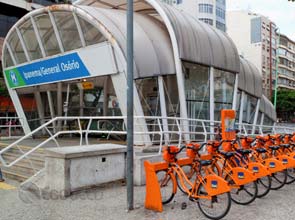Half of humanity lives in cities today. By 2030, up to 60 percent of the global population will be living in urban areas. In terms of their collective size, cities occupy a small share of only two percent of the world’s landmass. But in terms of environmental impact, they leave a large footprint. Urban areas account for 60 to 80 percent, or more than two-thirds, of the world’s energy and are responsible for over 70 percent of carbon emissions.
“Cities are the growth engines of the future, offering their populations greater opportunities for education, employment and prosperity,” said Dr. Roland Busch, member of the managing board of Siemens and chief executive at Siemens’ infrastructure and cities unit.
“Yet, the negative effects of their growth can also result in traffic congestion, informal settlements, urban sprawl, environmental pollution, exploitation of resources and a significant contribution to climate change,” he added.
Currently, About 50 percent of cities worldwide are already facing the effects of climate change, while 90 percent of all urban areas are coastal, making most cities prone to floods helped by rising sea levels and stronger storms.
But while these areas are susceptible to the impacts of the changing climate, their high density can actually deliver efficiency gains and technological innovation while reducing resources and energy consumption, the U.N. notes.
Sustainable cities or “eco-cities” could be the ideal solution to rapid urbanization. Sustainable cities are those that integrate environmentally sound actions like energy, water and food efficiency; waste output, water and air pollution reduction; and, more importantly, carbon greenhouse gas emissions cuts.
In the Rio+20 United Nations Conference on Sustainable Development, such cities were presented as part of the “green future” that the U.N. envisions for the world.
‘Sustainable cities’
A report jointly released by the Economist Intelligence Unit and Siemens assessed the environmental friendliness of major cities worldwide.
In the face of pressures to combat the pitfalls of urbanization, how well do cities perform? The Green City Index looked into over 120 cities in the world and ranked their eco-friendliness by region according to eight categories, including carbon emissions, energy, waste management, and environmental governance, among others. According to the Green City Index, cities will shape the world’s environmental future.
In Europe, where 33 cities were evaluated, Copenhagen is found to have the highest rate of sustainability, followed closely by Stockholm. Copenhagen is among the top five in all categories, except waste management and land use. Completing the first five for the greenest cities in Europe are Oslo, Vienna and Amsterdam.
Significantly, Oslo uses the highest share of renewable sources, scoring 65 percent in the assessment. Meanwhile, residential buildings in Copenhagen and Berlin consume about 40 percent less energy than the index average.
For the United States and Canada, San Francisco leads 26 other countries in the index, with notable strong policies in place for all categories. The index identified waste management as the city’s strength. “In 2009, San Francisco became the first U.S. city to require that all residents and businesses separate waste and compost material from normal trash,” according to the index.
Vancouver ranks second, while New York and Seattle are third and fourth, respectively.
Both San Francisco and Los Angeles have outstanding efforts in recycling waste, with 77 percent and 63 percent in the overall ratings for the region.
Asia and Latin America
For Asia and Latin America, five levels of overall environmental performance were used.
Singapore is the only Asian country to reach “well above average” level in the index, outshining 21 more countries in the region. It shows consistently strong results across all individual categories.
Countries in the “above average” level are Hong Kong, Seoul, Taipei and Japanese cities Osaka, Tokyo and Yokohama.
Meanwhile, Curitiba is the Latin American counterpart of Singapore, as the only city in the region to get the highest level in the index.
“The Brazilian city is the birthplace of bus rapid transit and Brazil’s first major pedestrian-only street. It’s environmental oversight is consistently strong and it has among the best environmental policies in the index in each category.”
Other Latin American cities that made it to the above-average level are Belo Horizonte, Bogota, Brasilia, Rio de Janeiro and Sao Paolo.
Overall, the Green City Index underscored the “urgent need and rare opportunity” that could be gained from rapid expansion of the cities especially in developing countries to set the pathway toward more sustainable development.
“Guaranteeing sustainable growth in the face of overwhelming urbanization is one of the world‘s biggest tests in the coming decades. To meet the challenge we must ensure that proven strategies and initiatives become the reality in the majority of the world’s growing cities,” the index concluded. (Catherine Dominguez)













